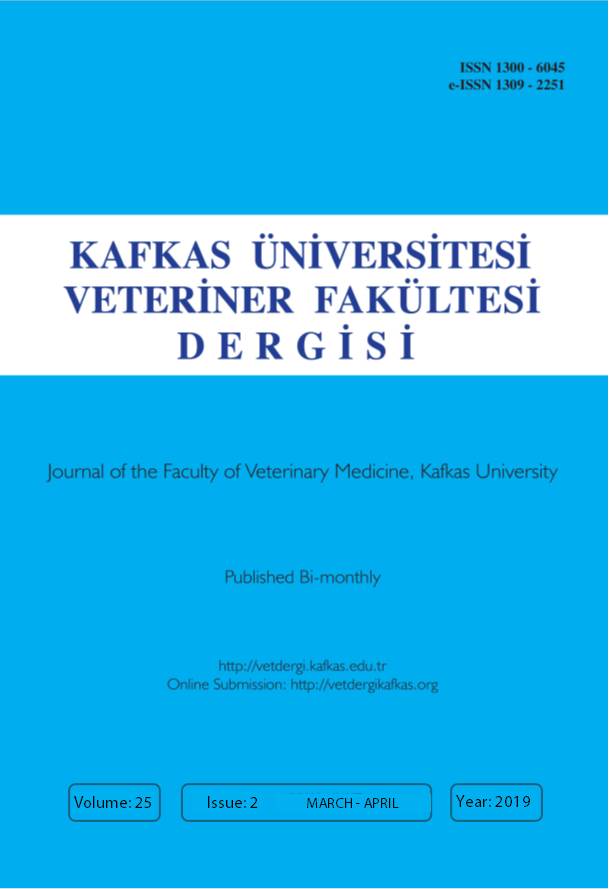
This journal is licensed under a Creative Commons Attribution-NonCommercial 4.0 International License
Kafkas Üniversitesi Veteriner Fakültesi Dergisi
2019 , Vol 25 , Issue 2
The Effects of Severe Hypoxia on Nitric Oxide Parameters in Hypoxia-tolerant Rodent: Nannospalax nehringi
1Department of of Physiology, Faculty of Veterinary Medicine, Kafkas University, TR-36300 Kars - TURKEY2Department of Biochemistry, Faculty of Veterinary Medicine, Kafkas University, TR-36300 Kars - TURKEY
3Department of Medical Biology, Faculty of Medicine, Kafkas University, TR-36300 Kars - TURKEY
4Department of Biology, Faculty of Science, Dicle University, TR- 21280 Diyarbakır - TURKEY DOI : 10.9775/kvfd.2018.20699 Blind mole rats (BMRs) are solitary rodents which are tolerant to severe hypoxia. The aim of this study is to reveal the changes in nitric oxide (NO) and nitric oxide enzymes (NOS), which are involved in many physiological and pathological processes related with hypoxia, in BMRs under severe hypoxia. For this purpose, 12 subadult (11-15 moths) male Nannospalax nehringi were captured in Kars location. Captured BMRs were divided into two groups as Normoxic (NG) and Hypoxic (HG) randomly (n=6). NG were kept in completely dark, normoxic conditions for 52 h. HG were kept inside completely dark glovebox chamber with 7% oxygen flow for 52 h. After experimental protocol, NG were sacrificed under normoxic conditions and HG were sacrificed inside glovebox chamber with 7% oxygen. NO, iNOS, eNOS, nNOS and MDA levels of plasm and homogenized tissue samples were detected spectrophotometrically. All parameters of each sample were found to be high in HG compared to NG. But especially, NO was high in the lung tissues of HG. Additionally eNOS level of the kidney, liver and lung, iNOS levels of the liver and eNOS, and nNOS levels of the brain were found to be markedly high. Consequently, our data on NO and NOS enzyme production in Nannospalax nehringi tissues under hypoxia are compatible with the data obtained from other animals, but it contains differences in some points. We believe that these differences are different evolutionary adaptations of BMRs to hypoxia. Keywords : Hypoxia, NO, iNOS, eNOS, nNOS, MDA, Nannospalax nehringi










